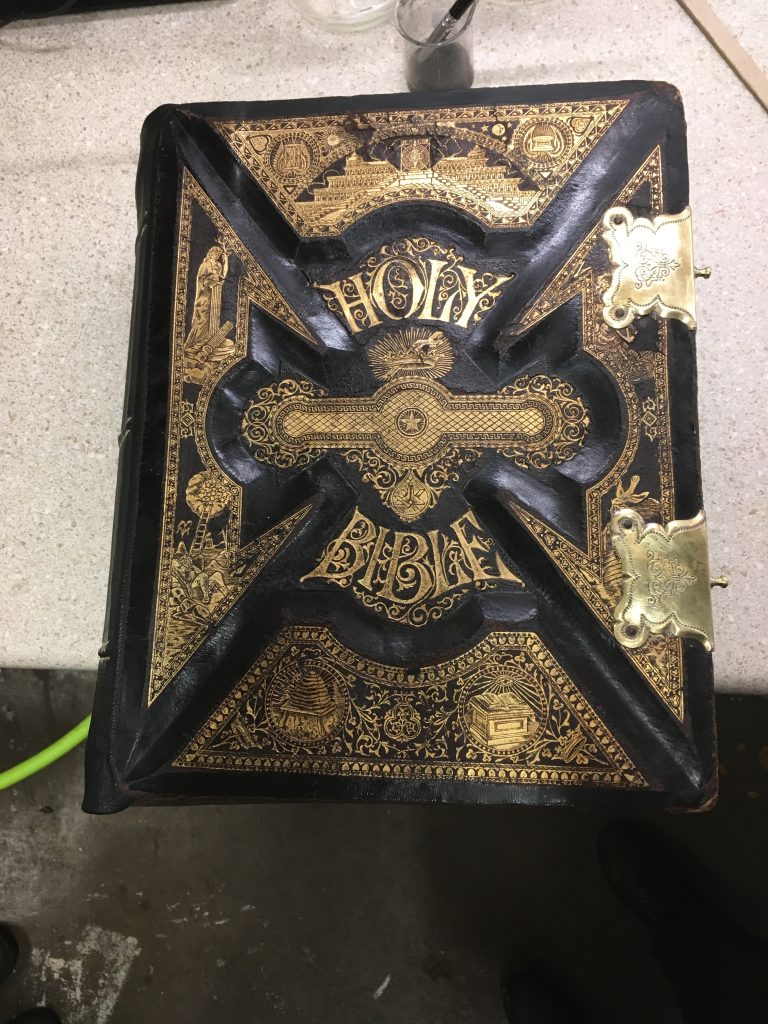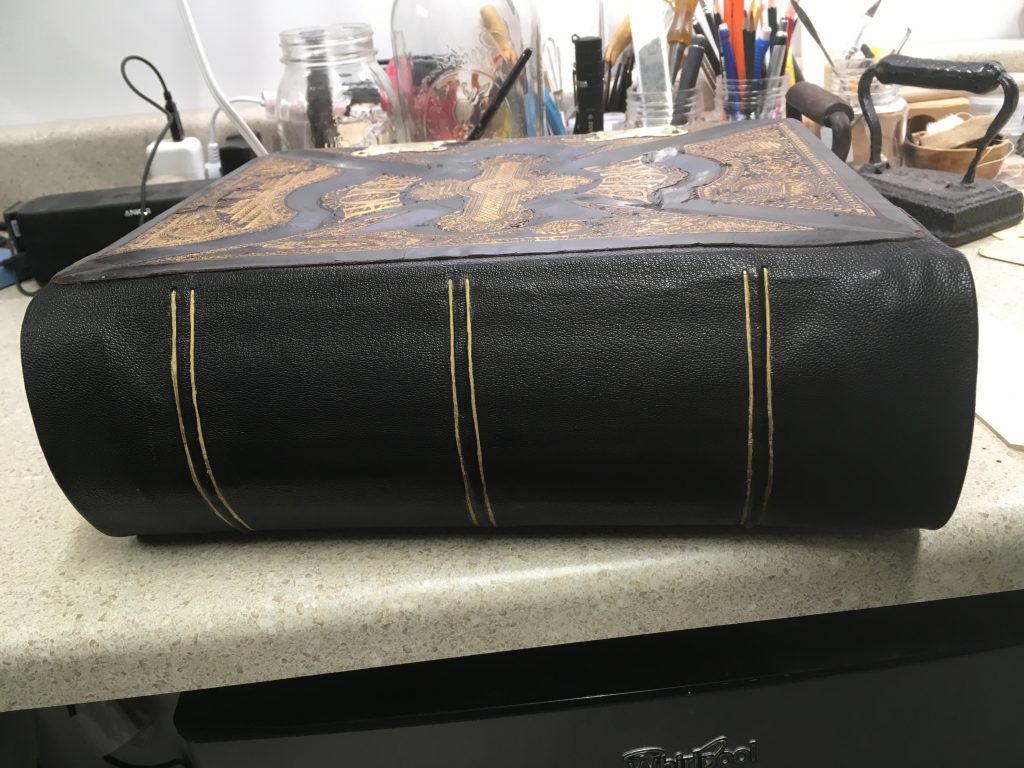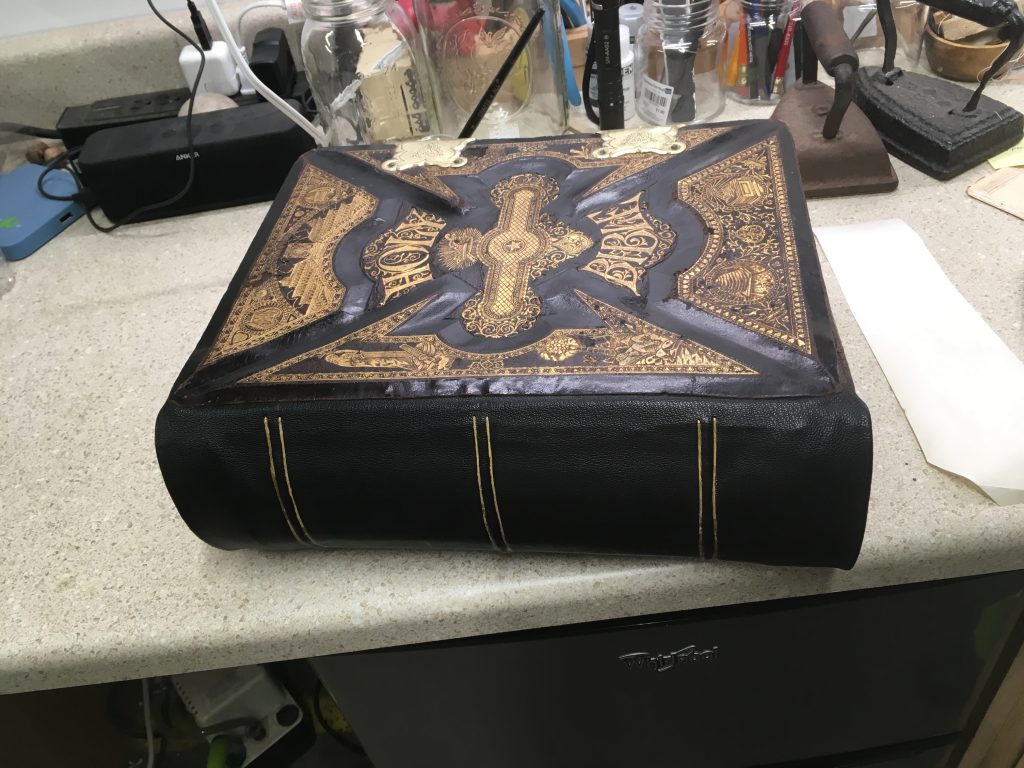This is a client’s piece, only recently discovered after languishing decades in a trunk in the attic. Working with the client, we agreed on rebinding the book, limited conservation intervention, and as much repair as I could manage.
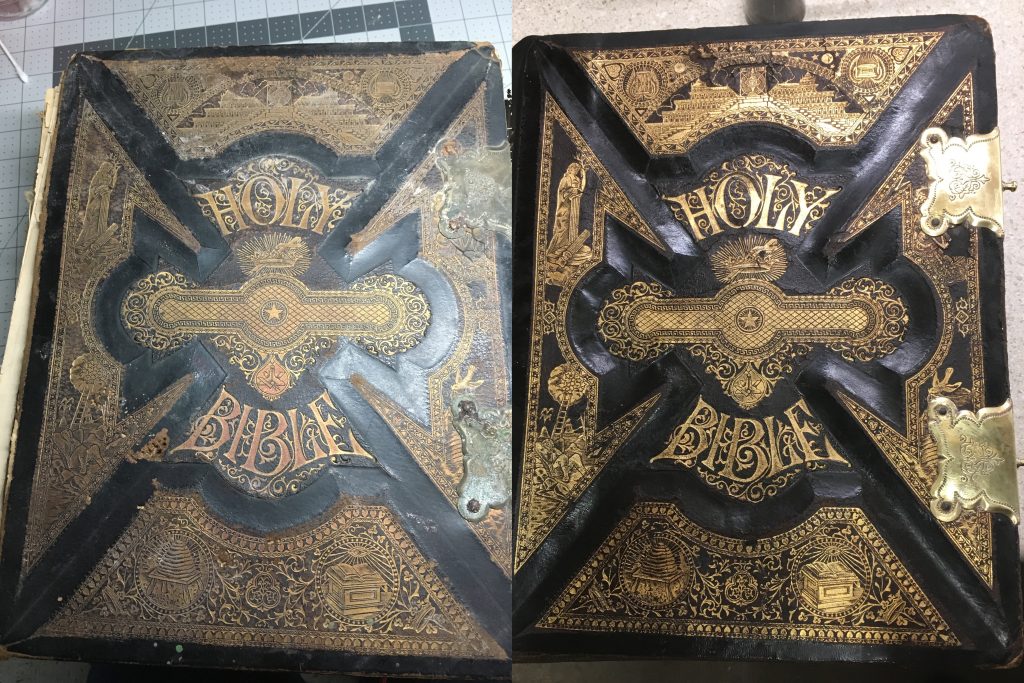
The clasps were missing from the back, but they remained on front cover. The iron nails holding them in place had rusted and the corrosion damaged some of the brass.
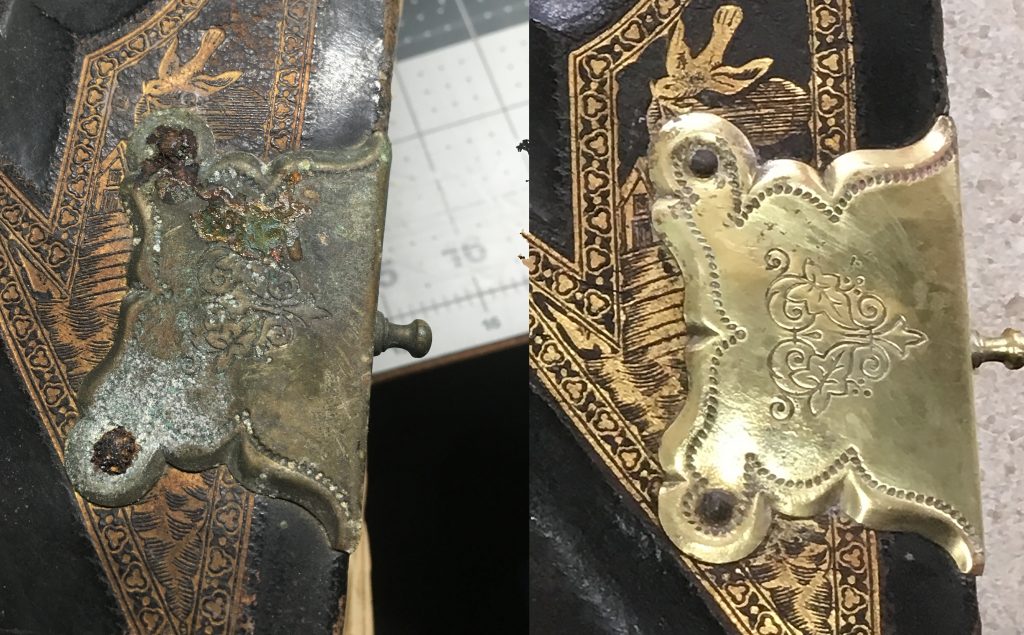
The gilding was really dirty, and was the primary reason why I had the bible in my possession for so long. It took months of trial and error to find a cleaning method that didn’t lift the gold. Some kind of protective cover had been applied to the gold and had gotten dirty and trapped 119 years of grime in place. I tried (in order): water, isopropyl alcohol, leather detergent, soap and water, metal de-corroder, and Brasso; none of which were successful. I consulted a professional gilding studio with over 40 years experience working with gold gilding, and they were stumped, because gold shouldn’t tarnish! I’d already tried all of their suggested fixes, and spent months trying to research a solution- all to no avail.
Ultimately, I found the solution in the book The Restoration of Leather Bindings by Bernard C. Middleton, 4th Ed. Discussing cleaning the leather binding, the entry says “When all else fails, Vulpex, a liquid oleate soap will often work wonders in cleaning grimy gold tooling. A 10% solution in water may be strong enough to brighten dull gold when ordinary soap achieves nothing. In the case of gold tooling which almost looks like blind tooling a 25% or stronger solution may be required… But care should be exercised if the leather is colored because the soap may shift it.”
Vulpex is a soap I use when washing paper- I never considered trying to clean gilding with it, as it is pretty intense stuff, able to clean grease and dirt from paper without any agitation or physical interaction. I had the cleaning agent in my cupboard the entire time! I ended up using a 20% solution and finally seeing what the lovely gold was supposed to look like!
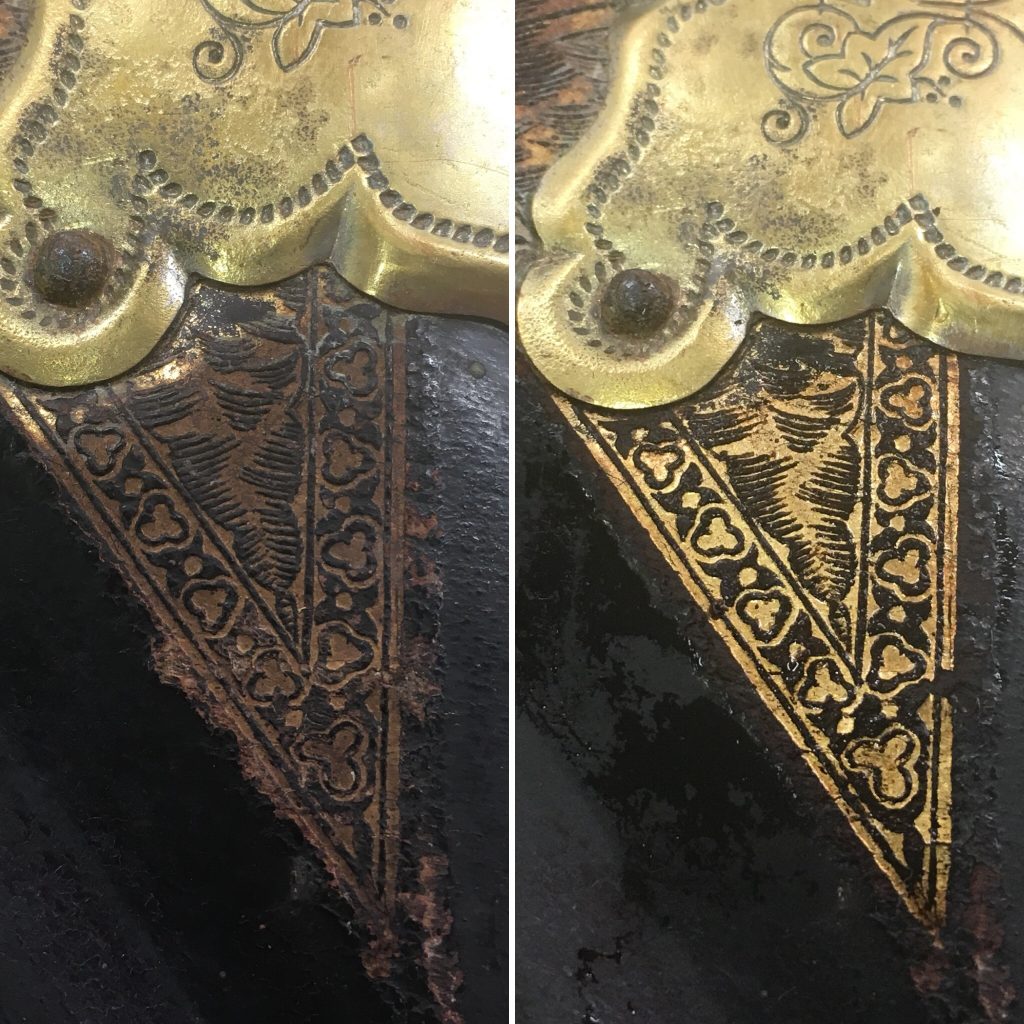
The leather on the covers had been quite worn, and where it rubbed against other books or shelves, the leather dye had been worn away/faded. To fix this, I mixed up a solution of watered-down black watercolor paint, and put a few coats over both front and back, darkening the leather. I didn’t want to use 100% opaque black, because we didn’t want the bible to look completely new; the watered down solution darkened the leather enough to give the design the dramatic contrast it was meant to have, but not completely darkening the leather.
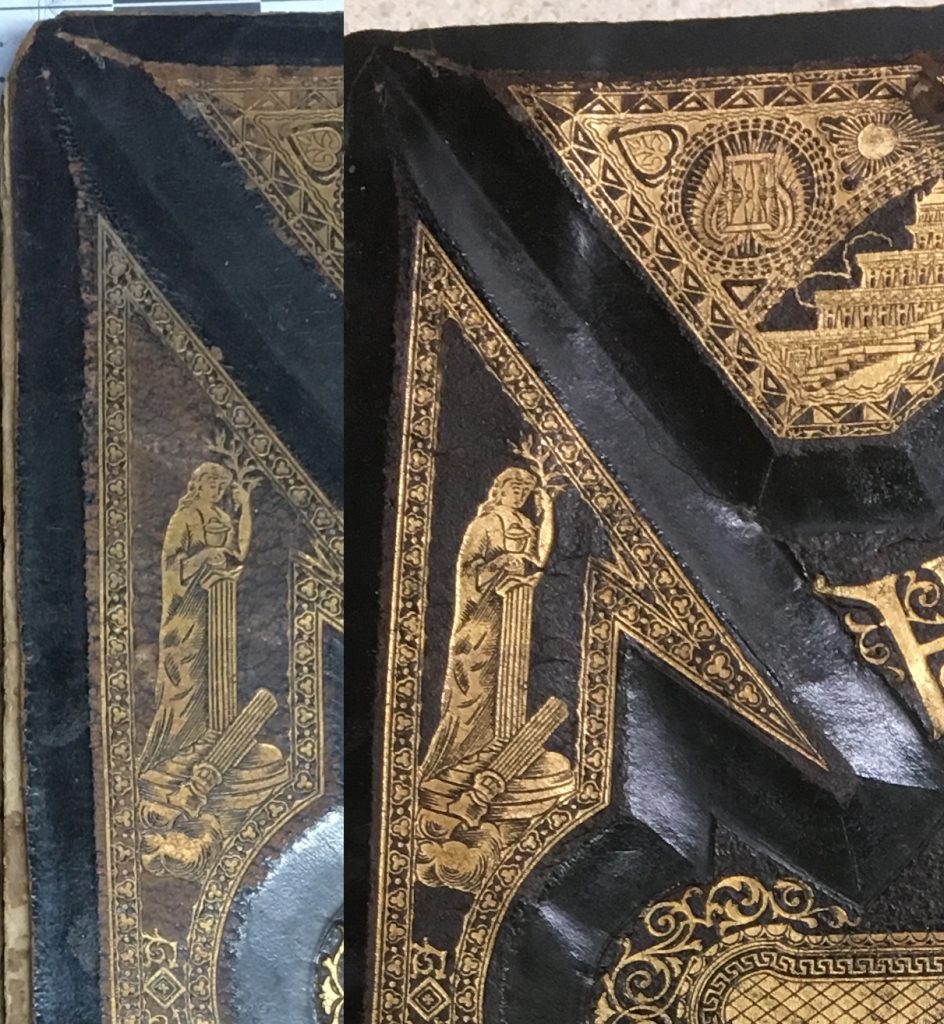
The bible came to me in pieces, and with no spine. I completely re-bound the book by hand, trimming up the edges, cleaning, and mending all the tears and filling in gaps.
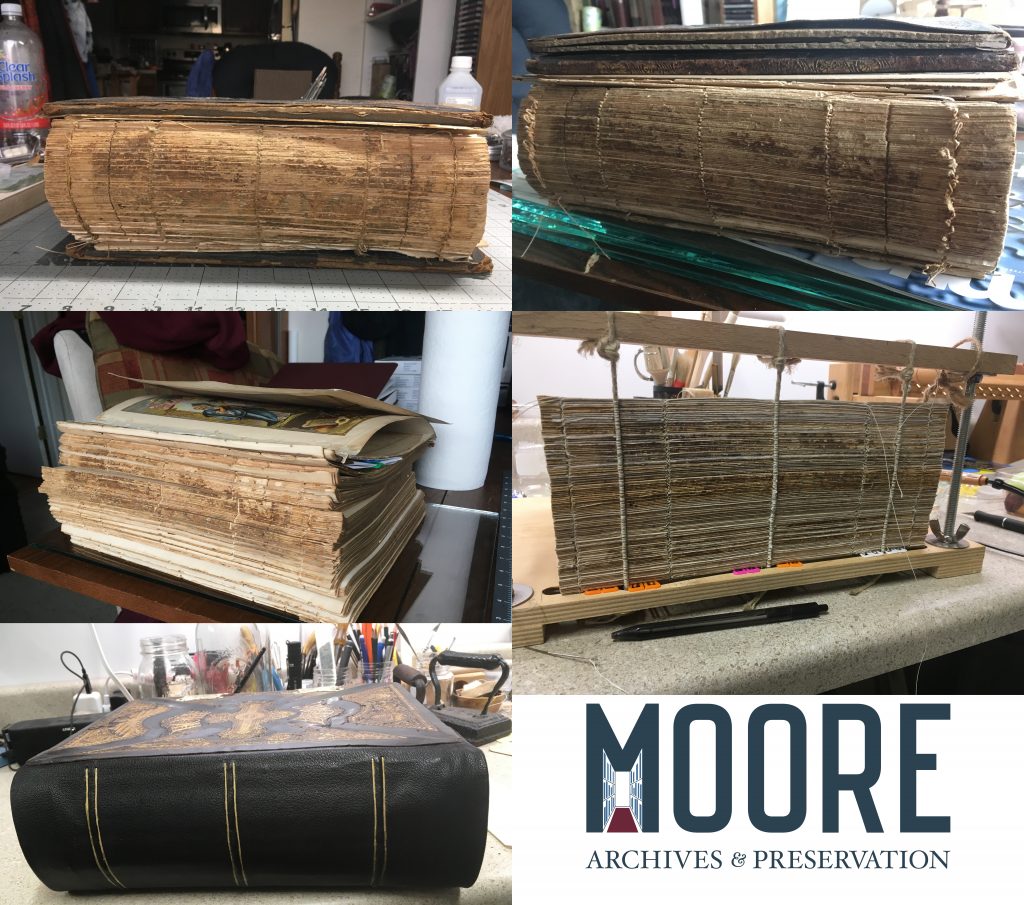
This paper was (and mostly still is) highly acidic, which has caused the worst damage to the edges of the paper. The client and I worked to find a good solution on the conservation work to fit their budget, and so I only deacidified the pages that contained handwritten data. The rest of the book remains subject to further deterioration, but I trimmed the edges and reinforced weak points with acid free asian papers, to help the bible last as long as possible. I neglected to get an after photo though!
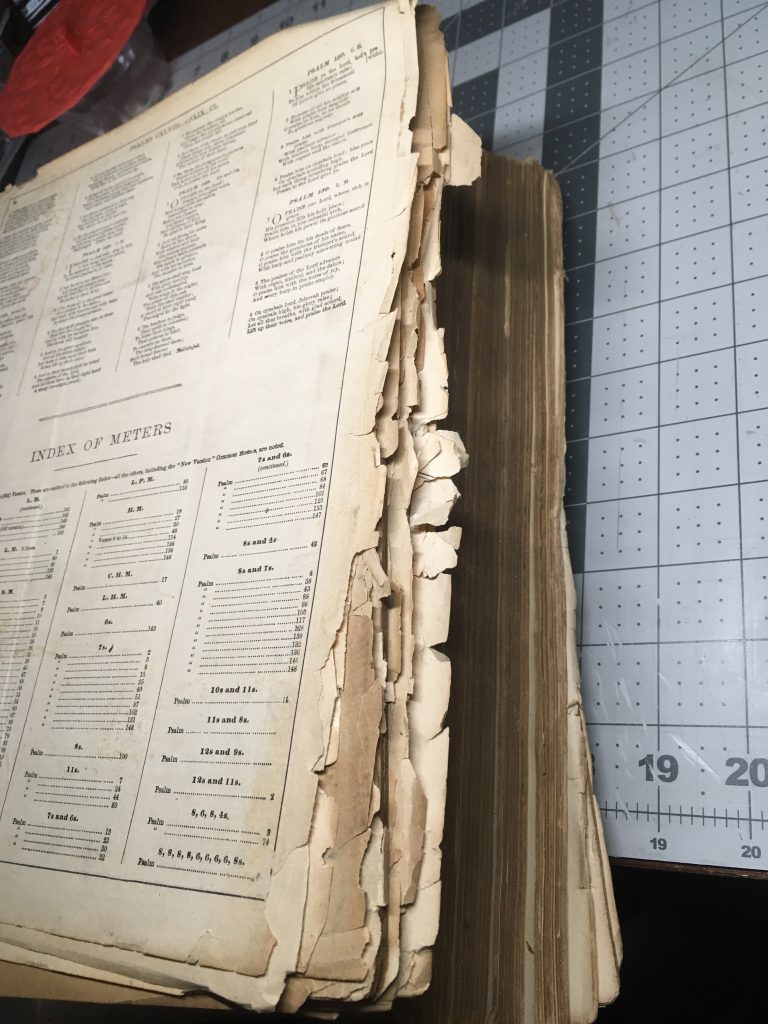
The paper in the beginning and end of the bible had completely come unbound and had been mixed together. Unfortunately the printers who put the book together didn’t seem to have the process figured out, because each new section (index, Animals of the Bible, etc.) started with page number one- so putting it back in order was particularly challenging, especially the sections that were missing a page or two. I did some research and found a completely digitized version of this bible, and was able to reassemble the book thanks to this reference!
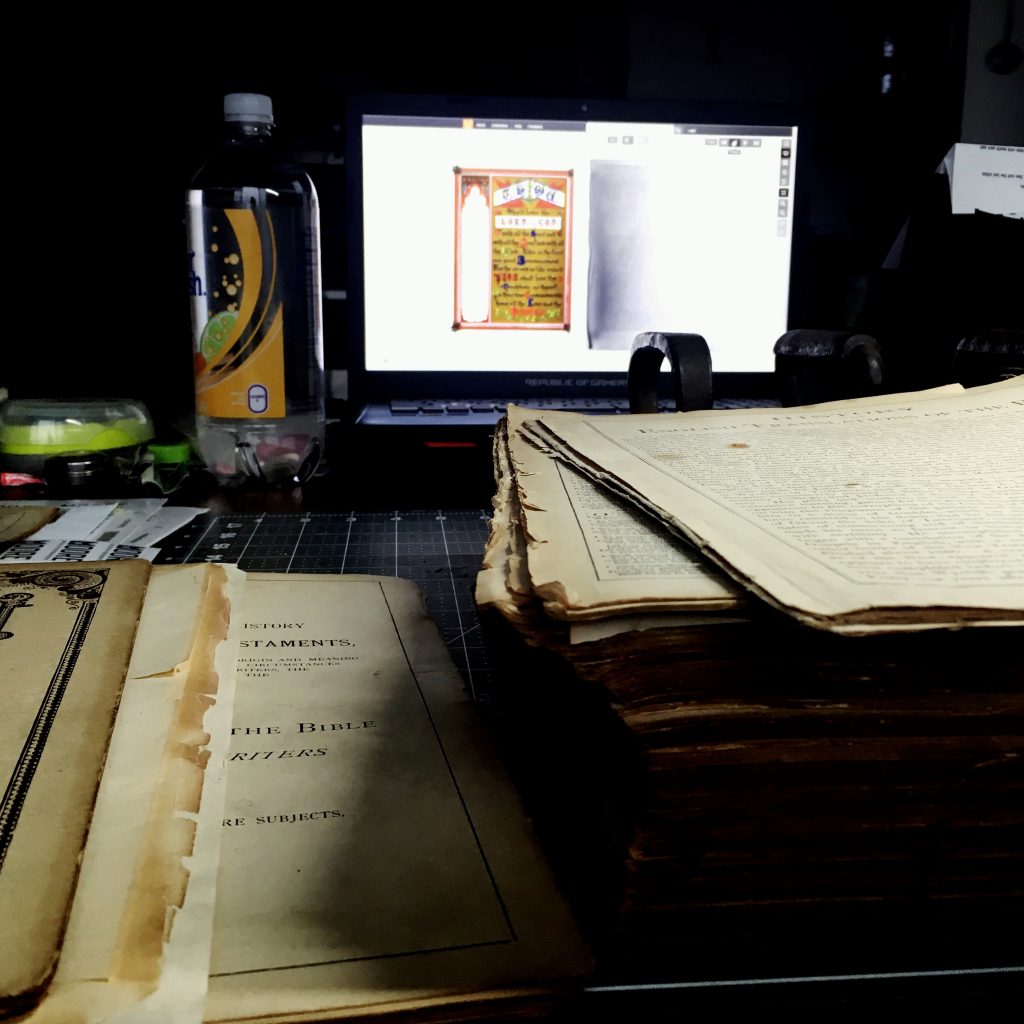
In old books, and especially in large books a binder finds many interesting things; hair, bugs, dirt, seeds, death certificates, old greeting cards, and… Bees? Oh, Bs. It was especially funny to run across these in the binding! Purple bees and their pollen.
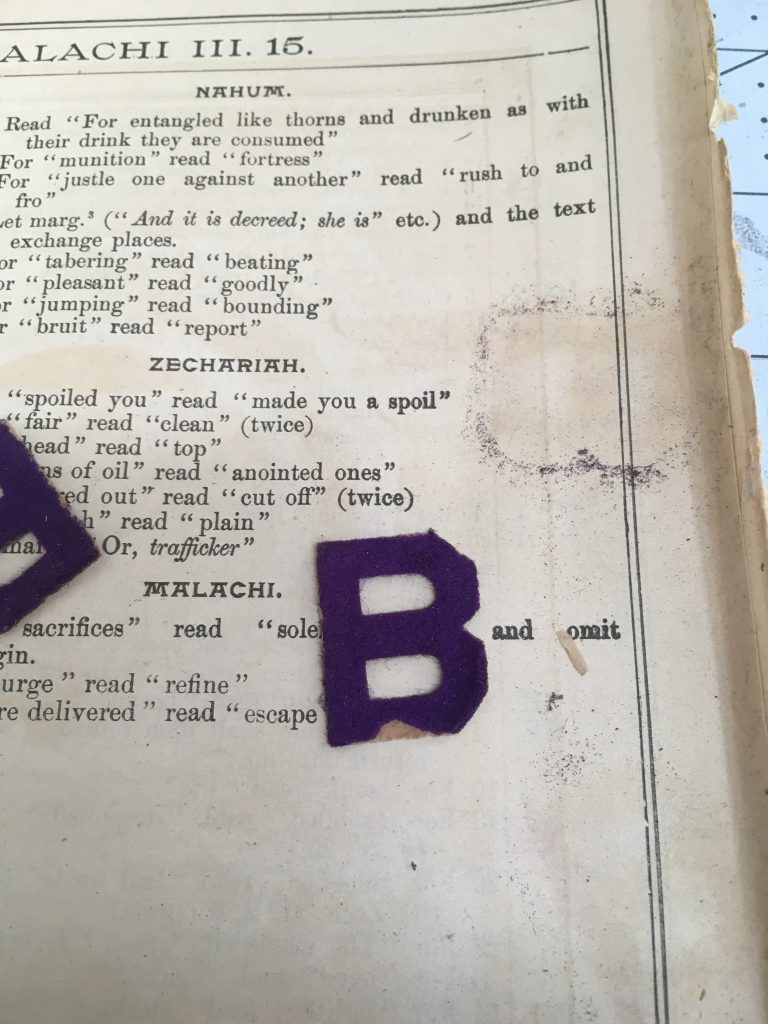
This is the hand-binding section. Up to this point in my career, this is the largest book I’ve ever had to re-bind by hand. I think the total amount of time sewing each signature into the book totaled approximately four full days of labor, and this book’s spine was over nine inches wide.
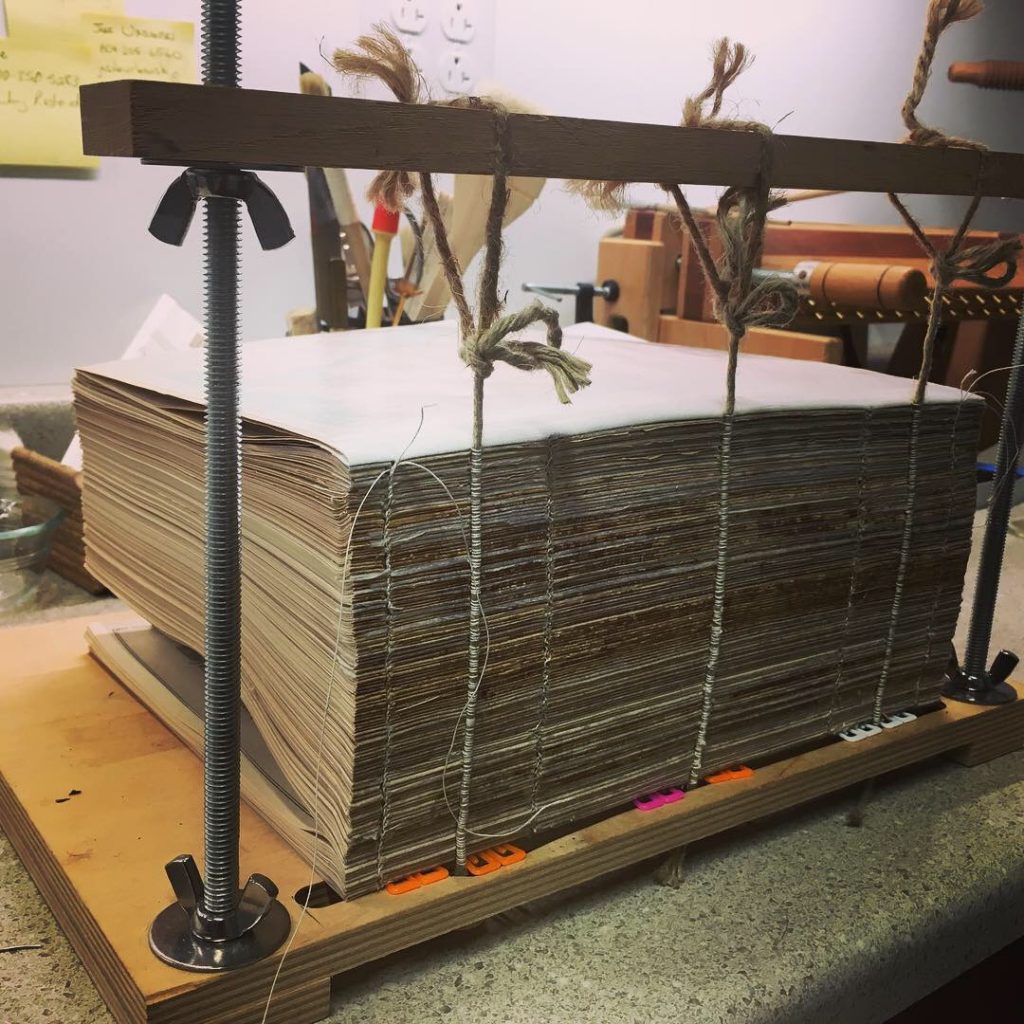
Sadly, the leather had really taken a beating over the years, and had come unglued from the formed cardboard cover- but hadn’t come completely unglued. Only certain parts had come unglued, and I had to come up with a good solution for delivering the glue to the right place, without pulling the whole cover off and risking further damage to the leather. I sent out a query to friends and family, asking how I might get some hypodermic needles- to some predictably wary responses! Thankfully, several friends stepped forward to donate old pet medication needles and unneeded insulin needles to a good cause. This ended up being the best solution to deliver adhesive to the hard-to-reach places.
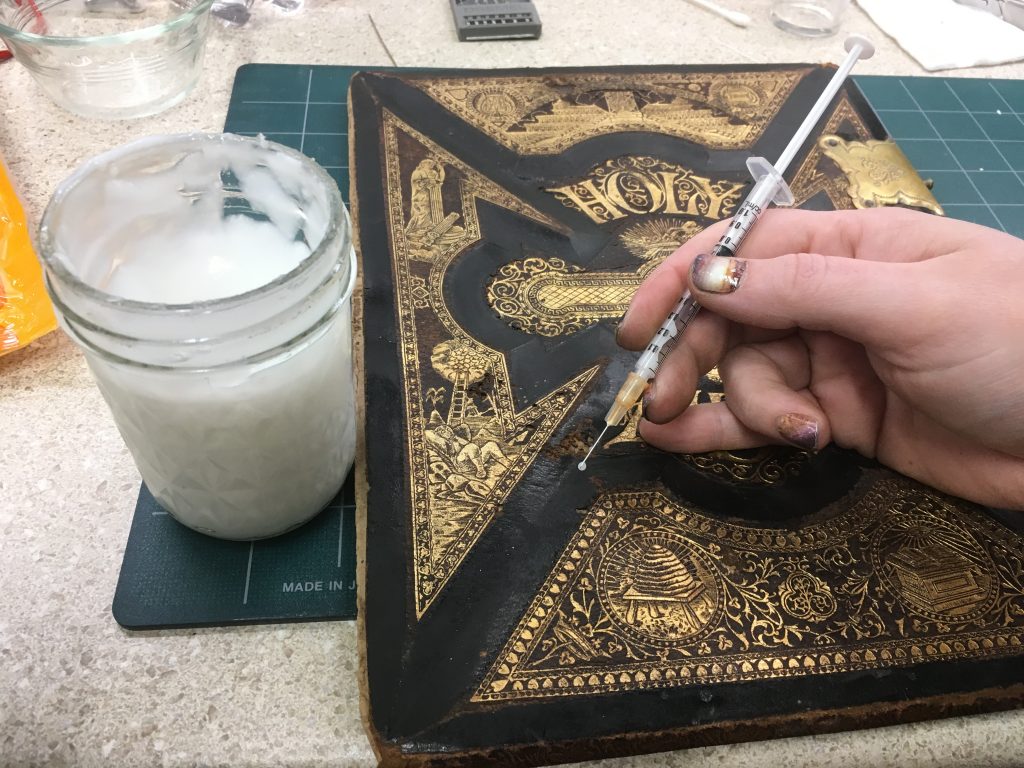
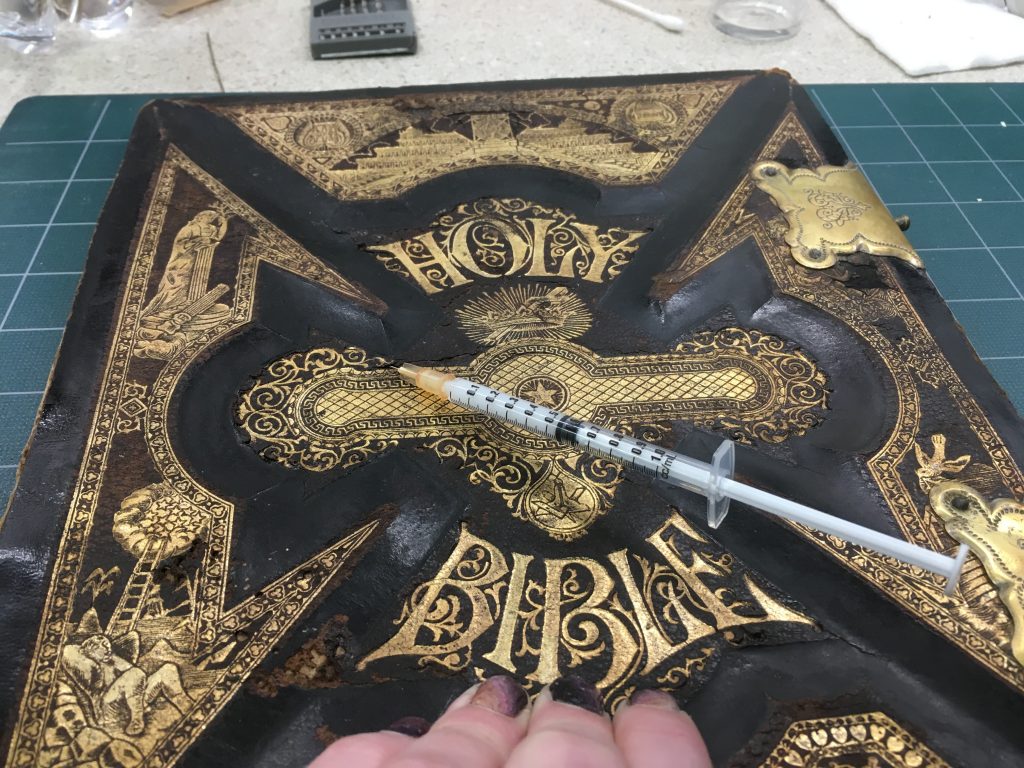
And here is the finished product! I learned so much from this project, and it was extremely satisfying to bring to completion. My client is happy; I am happy; this book will last many more years to chronicle the life of its family.
